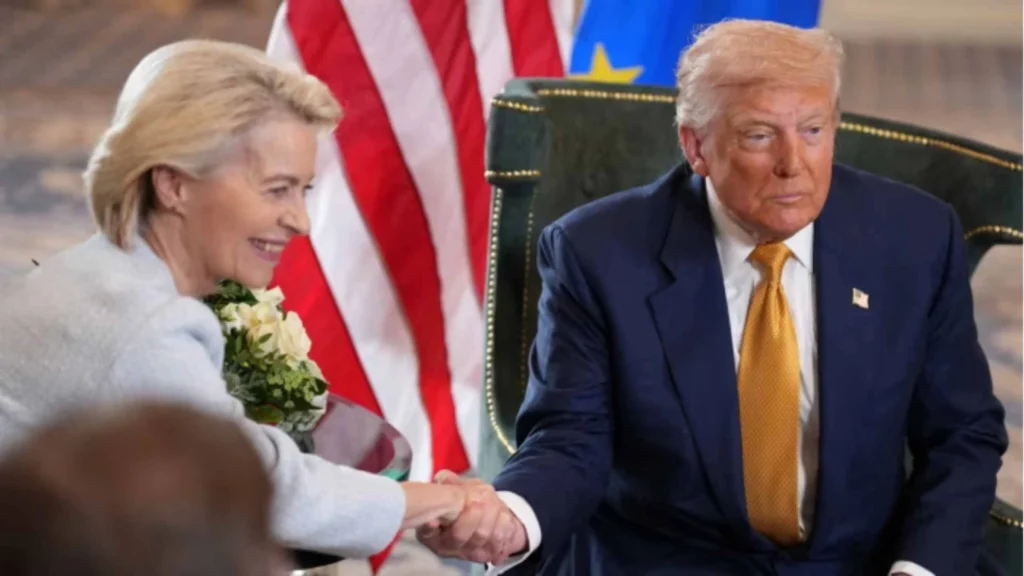The United States and the European Union have reached a significant trade agreement that imposes a 15% tariff on most EU imports—averting a potentially damaging trade war. The deal, announced on Sunday by U.S. President Donald Trump and European Commission President Ursula von der Leyen, follows months of negotiations and rising tensions between the two major economies.
Why This Deal Matters
The U.S. and EU together represent nearly a third of global trade. A breakdown in negotiations could have led to major disruptions across industries, particularly in autos, energy, agriculture, and technology. The newly agreed 15% tariff rate is half of what was previously threatened and is expected to provide temporary economic stability and preserve vital trade relationships.
What Was Agreed
- Tariff Rate: A flat 15% import tariff will apply to most EU goods entering the U.S., replacing the earlier threat of a 30% levy.
- EU Commitments:
- Approximately $600 billion in U.S. investments.
- An estimated $750 billion in U.S. energy purchases over the coming years.
- Increased purchases of U.S. military equipment.
- Approximately $600 billion in U.S. investments.
- Tariff Exemptions: No tariffs will be applied on:
- Aircraft and aircraft parts
- Certain chemicals and generic drugs
- Semiconductor equipment
- Selected agricultural goods, critical raw materials, and natural resources
- Aircraft and aircraft parts
Key Unresolved Issues
While hailed as a breakthrough, the agreement leaves several areas open:
- Steel and Aluminum Tariffs: The U.S. will maintain its 50% tariff. Discussions about transitioning to a quota-based system are ongoing.
- Spirits and Beverages: No agreement yet; talks will continue.
- Non-Tariff Barriers: U.S. officials say the EU agreed to reduce them for autos and some farm products, though EU representatives say specifics are still under discussion.
Leaders’ Reactions
- Donald Trump: Called it “the biggest deal ever made,” highlighting the scale of EU investment and its importance for U.S. farmers, energy, and defense industries.
- Ursula von der Leyen: Praised the deal for bringing “stability and predictability” despite acknowledging the tariff level was higher than hoped.
- German Chancellor Friedrich Merz: Welcomed the agreement for saving Germany’s export-heavy economy, particularly its auto sector.
- Critics in Europe: Some officials, like European Parliament trade committee chair Bernd Lange, criticized the deal as imbalanced and potentially costly for the EU.
Economic Impact & Market Response
- Currency Markets: The euro rose by 0.2% against the dollar shortly after the deal.
- Industry Relief: European companies such as Airbus, Mercedes-Benz, BMW, and Novo Nordisk are likely to benefit if further negotiations reduce trade restrictions.
- Ongoing Risks: A senior U.S. official warned that tariffs could be raised again if the EU doesn’t fulfill its investment pledges.
The Bigger Picture
This deal adds to Trump’s recent trade wins, including accords with Japan, Indonesia, the Philippines, and Vietnam. However, experts warn this is only a framework agreement lacking detail, which may lead to divergent interpretations in the future—similar to what happened with the U.S.-Japan deal.Despite unresolved areas, the agreement will be marketed by the Trump administration as a key victory in its ongoing effort to reset global trade relationships and reduce the longstanding U.S. trade deficit, which reached $235 billion with the EU in 2024.
